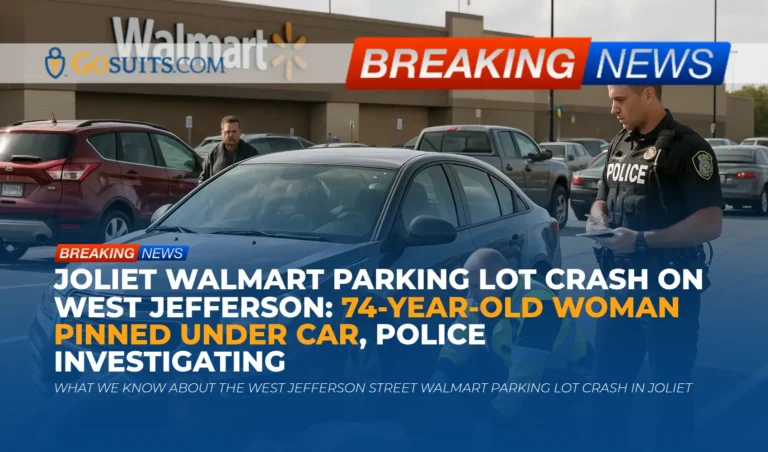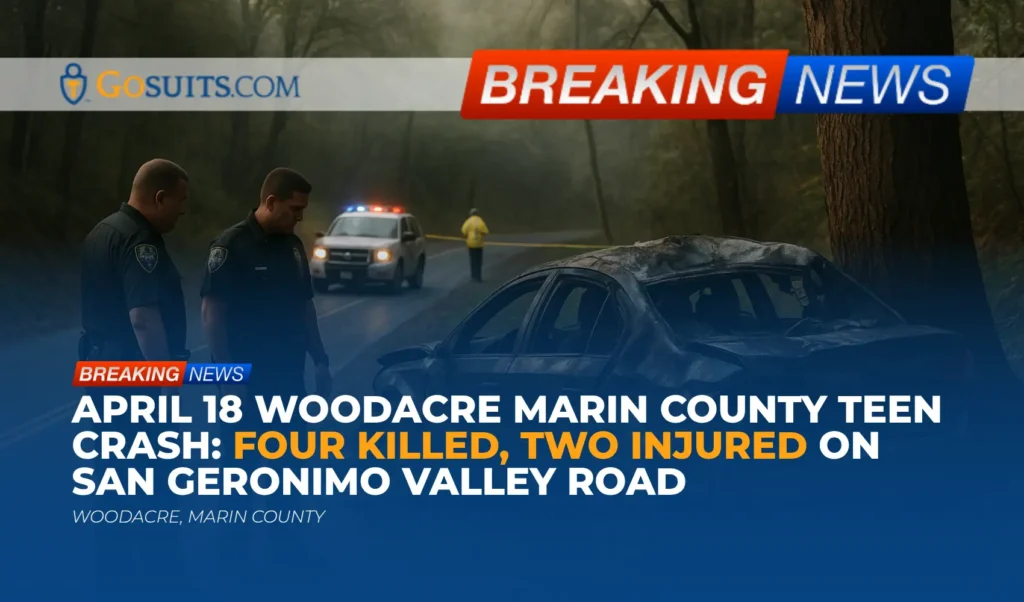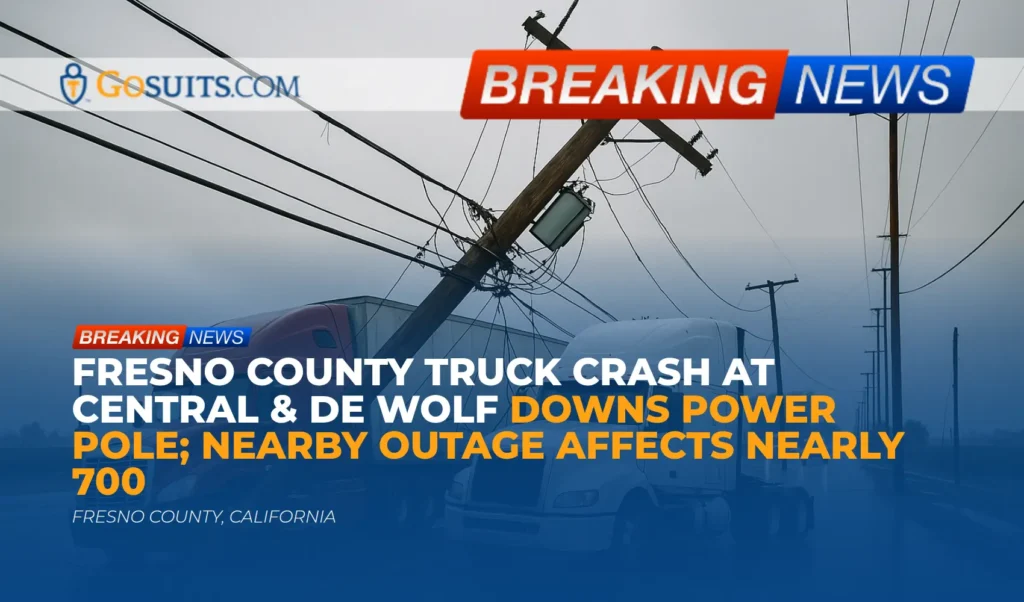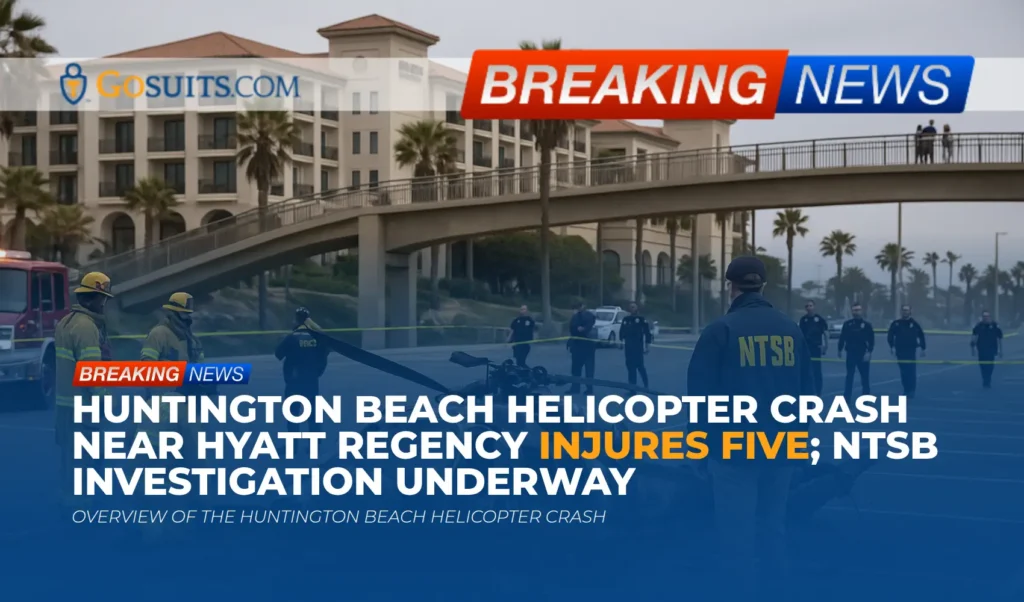- What We Know About the West Jefferson Street Walmart Parking Lot Crash in Joliet
- Timeline and Location Details
- Agencies Involved and How to Get Official Records
- Legal Context for Illinois Parking Lot and Backing Collisions
- Evidence to Preserve After a Parking Lot Pedestrian Injury
- Insurance Considerations
- Safety Insights: Backing Crashes and Older Pedestrians
- What Comes Next in the Joliet Police Investigation
- Commentary from Gosuits Joliet, Illinois Personal Injury Attorney
- Practical Next Steps and Why Acting Promptly Matters
What We Know About the West Jefferson Street Walmart Parking Lot Crash in Joliet
On the afternoon of October 7, in the parking lot of the Walmart on West Jefferson Street in Joliet, a 74-year-old woman suffered serious injuries after being struck and pinned beneath a vehicle. According to police, officers were dispatched around 2:18 p.m. on a report of a pedestrian hit by a car. Preliminary information indicates a Chevrolet Cruze, driven by a 37-year-old man, backed out of a parking stall and collided with a Ford Escape that was waiting for another vehicle to exit. After a female passenger from the Ford Escape stepped out to assess damage and speak with the other driver, the Chevrolet Cruze allegedly reversed again, striking her and knocking her to the ground. The driver then reportedly moved forward, pinning her beneath the vehicle and also striking an unoccupied parked car.
Bystanders intervened to help the victim and stop further movement of the vehicle. The victim was transported by Joliet Fire Department personnel to St. Joseph Medical Center with serious, but reported as non-life-threatening, injuries. The driver of the Chevrolet Cruze was detained and questioned at the Joliet Police Department, then released pending further investigation. The incident remains under active investigation by the Joliet Police Department’s Traffic Unit.
Events like this are frightening and disorienting. Parking lots can be deceptively dangerous spaces because they mix vehicle movement with pedestrian foot traffic in close quarters. Our thoughts are with the injured woman and her loved ones, as well as any witnesses who experienced the scene.
Timeline and Location Details
Time and date
Police reports indicate the call for service went out at approximately 2:18 p.m. on October 7. Daylight conditions and active shopping periods often mean parking lots are crowded, with vehicles backing from stalls and pedestrians moving between store entrances and parked cars.
Location
The incident occurred in the parking lot of the Walmart located on West Jefferson Street in Joliet, Illinois. West Jefferson Street is a busy commercial corridor with frequent vehicle and pedestrian movement.
Sequence described by police
- Initial movement – A Chevrolet Cruze backed from a parking stall and contacted a Ford Escape that was waiting in the lane.
- Passenger exit – A female passenger from the Ford Escape exited to check damage and speak with the other driver.
- Second reversal – The Chevrolet Cruze allegedly reversed again, striking the woman and knocking her down.
- Forward movement – The Cruze then reportedly moved forward, pinning the woman beneath the vehicle and also colliding with an unoccupied parked car.
- Bystander intervention – People in the lot intervened to prevent further movement and helped the victim.
- Medical transport – Joliet Fire Department transported the woman to St. Joseph Medical Center for treatment.
While the investigation is ongoing, this timeline provides important context for understanding potential liability, the types of evidence likely available, and the immediate needs of the injured pedestrian.
Agencies Involved and How to Get Official Records
In the aftermath of an injury incident, obtaining official records and preserving evidence are critical steps for clarity, insurance claims, and any potential civil case. Below are common points of contact and what they may provide. Specific processes can vary by agency and are subject to privacy rules and ongoing investigation limitations.
Joliet Police Department Traffic Unit and Records
The Joliet Police Department is the lead investigative agency. People commonly request a copy of the traffic crash report once it is completed and approved. Depending on the status of the investigation, availability may be delayed. The City of Joliet’s official website provides information about public records requests and processes. Illinois has a Freedom of Information Act framework for accessing public records, although police may withhold certain materials during an active investigation. For general guidance on FOIA in Illinois, see the state’s FOIA portal at the Illinois government site: Illinois FOIA.
When the report is available, it typically includes the involved parties, vehicles, insurance, roadway descriptions, and officer narrative. Supplemental documents such as photographs or diagrams may be available depending on department policy and the investigation status.
Joliet Fire Department and EMS Records
Emergency medical services documentation often includes patient assessment, care provided, and transport details. Because these are medical records, release may be controlled by privacy laws. Some fire departments require an authorization from the patient or legal representative to share EMS run reports. Processes are usually listed on the city’s official website. If the patient is unable to request records, a legal representative may need to provide documentation of authority.
Hospital Medical Records
Medical records and billing from the hospital and any follow-up providers are central to documenting injury, treatment, and costs. Under federal law, individuals generally have a right to obtain copies of their health records, subject to identity verification and any limited exceptions. See the U.S. Department of Health and Human Services guidance on the right of access here: HHS HIPAA Right of Access.
Request both clinical records and itemized bills. Keep discharge summaries, imaging results, physical therapy notes, and any specialist evaluations related to the injuries.
Coroner or Medical Examiner
This event was reported as causing serious but not life-threatening injuries. In fatal incidents, families often work with the county coroner or medical examiner to obtain death investigation records and, where applicable, autopsy reports. Those records help clarify cause and manner of death and are important in wrongful death matters. Availability and procedures are dictated by local government policies and state law.
Store and Private Video
Parking lot incidents at large retailers frequently involve surveillance footage from exterior cameras and potential dash cameras from other vehicles. These recordings can be overwritten quickly. A prompt written preservation request, often called a spoliation letter, can help ensure relevant footage is retained. It should identify the date, time, location, and general description of the event. Delivery by a trackable method is recommended to document notice.
Witness Information
Witnesses play a crucial role in reconstructing what happened. If witnesses assisted at the scene, their names and contact information may appear in the police report. When possible, collect contact information directly and note where the witness was located, what they saw or heard, and any photos or videos they captured.
Legal Context for Illinois Parking Lot and Backing Collisions
While every case turns on its specific facts, several recurring issues arise in parking lot pedestrian injury incidents in Illinois.
Duty of Care When Reversing
Drivers reversing from parking spaces must do so with heightened attention to pedestrians and oncoming traffic. Although parking lots are not always delineated like public streets, drivers are expected to maintain a proper lookout, proceed slowly, and yield to pedestrians in their path. The State’s driver guidance emphasizes safe control and yielding to pedestrians when reversing and maneuvering. See the Illinois Secretary of State’s Rules of the Road for general safety expectations for drivers and pedestrians: Illinois Rules of the Road.
Failure to adequately check mirrors and surroundings, reversing without clearance, or continuing to maneuver after initial impact can factor into negligence analysis.
Pedestrian Priority in Shared Spaces
In parking lots, pedestrians routinely have the right to walk between vehicles and toward store entrances. Although crosswalks may not be painted in all areas, drivers still have a duty to avoid hitting pedestrians by operating at a safe speed, keeping a proper lookout, and stopping as needed. The manner of vehicle operation before and after the initial contact can be especially important when a pedestrian is on foot near the vehicle.
Comparative Fault in Illinois
Illinois follows a modified comparative negligence system. In civil injury cases, damages may be reduced by a person’s proportion of fault, and recovery is barred if a plaintiff’s fault exceeds 50 percent. The statute is available at the Illinois General Assembly site: 735 ILCS 5/2-1116. This framework often leads insurers to argue a pedestrian was inattentive or in a blind spot. A careful evidence review helps fairly allocate responsibility under the statute.
Time Limits to File Civil Claims
Illinois law generally provides two years to bring an action for personal injury. See 735 ILCS 5/13-202. Different timelines can apply in certain circumstances, including claims involving local public entities, which may have an abbreviated one-year period for civil actions under the Local Governmental and Governmental Employees Tort Immunity Act, 745 ILCS 10/8-101. Computing deadlines can be complex, so tracking dates early is important to avoid losing the ability to pursue a claim.
Potential Premises Liability Considerations
Although the primary focus in a backing collision is usually the conduct of the driver, parking lot design and maintenance can also be reviewed. Issues may include traffic flow patterns, placement of pedestrian walkways, visibility obstructions, lighting, and speed control measures. If site conditions unreasonably increase risk and contribute to an incident, an owner or manager may face questions about whether reasonable safety measures were in place. Any such assessment is highly fact-specific and should be grounded in evidence like site plans, incident history, and video.

Evidence to Preserve After a Parking Lot Pedestrian Injury
Evidence can fade quickly in parking lots. Proactive preservation improves clarity and reduces the chance of disputes later. Consider the following categories.
Scene Documentation
- Photographs and video – Capture the positions of vehicles, any skid or scuff marks, debris, lighting conditions, signage, and sightlines between parked cars. Even after vehicles move, wide shots that show layout can be valuable.
- Surveillance mapping – Note camera locations on the store exterior and light poles. Reference the exact time window when requesting preservation.
- Environmental factors – Record weather, sun angle, glare, and whether any objects blocked views near the parking stall.
Vehicle and Technology Evidence
- Vehicle condition – Photograph damage areas on all involved vehicles. Even minor scrapes can help reconstruct angles and sequences.
- In-vehicle systems – Identify whether the striking vehicle had a rear vision camera or parking sensors. Rear visibility equipment has been required in new passenger vehicles since 2018 under federal safety rules from the National Highway Traffic Safety Administration, which underscores the expectation of safer reversing practices. See NHTSA Rear Visibility.
- Dashcams – Ask nearby drivers if a dashcam recorded the event. Many systems overwrite within days.
Witnesses and Bystanders
- Contact information – Collect names, phone numbers, and email addresses for anyone who saw the incident or helped afterward.
- Statements – Write down what each witness recalls as soon as possible, including where they were standing and the direction of vehicle travel.
Medical Documentation
- Treatment records – Save emergency department notes, diagnostic imaging, lab results, and physician summaries. These documents link the incident to injuries and guide insurers’ assessments.
- Symptom journal – Track pain, mobility limitations, and how injuries affect daily activities. Consistent notes can help explain the human impact beyond bills and codes.
- Follow-up care – Keep physical therapy notes, prescriptions, and assistive device receipts.
Insurance and Employment Proof
- Health insurance EOBs – Explanation of Benefits documents show payments and balances and may be relevant to reimbursement issues.
- Employment records – If injuries affect work, maintain pay stubs, time-off records, and any disability paperwork.
Insurance Considerations
Parking lot pedestrian incidents typically implicate the at-fault driver’s auto liability insurance. Depending on the circumstances and coverages, additional insurance paths may be in play.
At-fault Driver’s Auto Liability Coverage
Illinois requires drivers to carry liability coverage, which can pay for bodily injury to others caused by the insured driver. State resources summarize mandatory coverages for Illinois drivers. See the Illinois Department of Insurance consumer information on auto insurance: Illinois Department of Insurance.
Early steps often include claim setup and, later, an evaluation of medical records, bills, and other losses. However, it is prudent to consult a qualified attorney before giving any recorded statement to an insurance company. Statements can be used to minimize or dispute the claim later. A brief consultation can help clarify rights before communicating with insurers.
Uninsured and Underinsured Motorist Coverage
Illinois law requires certain uninsured motorist bodily injury coverage on auto policies issued in the state. UM or UIM coverage can apply in scenarios where the at-fault party lacks sufficient insurance limits. The Illinois Department of Insurance consumer page above provides additional context on required and optional coverages.
Medical Payments Coverage
Some Illinois policies include optional Medical Payments coverage that can help with initial medical expenses regardless of fault. Review the declarations page or contact the insurer to confirm whether MedPay is included. Coordination with health insurance and third-party liability claims is often necessary to avoid reimbursement surprises.
Property Owner or Manager Coverage
If evidence suggests that parking lot design or maintenance contributed to the incident, liability insurance maintained by a property owner or manager may also be implicated. Requests for preservation of video and incident reports are key early steps, but any assessment of property liability should be grounded in facts and expert analysis.
Recorded Statements and Early Requests
- Consult counsel first – Before speaking to any insurance adjuster, consider consulting an attorney. What is said early can be quoted later and used to shape fault arguments under comparative negligence.
- Document communications – Keep copies of letters and emails and note dates of adjuster calls.
- Do not rush to settle – Early offers often arrive before the full scope of injury and recovery is known. Finalizing too early can foreclose compensation for later treatment needs.
Safety Insights: Backing Crashes and Older Pedestrians
Parking lot injuries often involve vehicles reversing near pedestrians with limited sightlines. National safety data and federal regulations underscore the dangers and the importance of cautious driving in these spaces.
Backover and Reversing Risks
NHTSA’s rear visibility rule requires rearview cameras in most new light vehicles beginning with model year 2018 to help mitigate backover crashes. The agency has highlighted the role of rear visibility in preventing backover injuries and fatalities. See NHTSA’s overview: NHTSA Rear Visibility. Even with this technology, drivers must physically check surroundings, proceed slowly, and be ready to stop immediately when a pedestrian is detected.
NHTSA’s Not-in-Traffic Surveillance research documents injuries and fatalities that happen off public roadways, including parking lots and driveways. These incidents collectively number in the thousands each year nationally. See NHTSA’s research summary for examples of non-traffic crash data: NHTSA Non-Traffic Surveillance.
Older Pedestrians Face Elevated Risk
According to the Centers for Disease Control and Prevention, older adults represent a disproportionate share of pedestrian fatalities and are at increased risk of serious injury when struck. The CDC’s pedestrian safety guidance for all ages, including older adults, is here: CDC Pedestrian Safety. The combination of vehicle mass, even at low speeds, and age-related vulnerability can lead to significant trauma in parking lot settings.

Practical Safety Tips
- Drivers – Come to a complete stop before shifting into reverse, check mirrors and over shoulders, back out slowly, and immediately stop at any sign of contact. After any contact, do not continue moving until it is safe and the area is clear.
- Pedestrians – Avoid walking directly behind vehicles that are running or have brake lights on, make eye contact with drivers when possible, and use marked walkways when available.
- Property managers – Maintain clear sightlines by trimming vegetation, ensure adequate lighting, mark pedestrian paths, and consider speed calming measures in drive lanes.
What Comes Next in the Joliet Police Investigation
The Joliet Police Department Traffic Unit typically undertakes a structured review after serious injuries in a parking lot crash. Although procedures may vary based on resources and case specifics, these steps are common:
- Scene documentation – Officers record vehicle positions, damage patterns, and any physical evidence. Photos, measurements, and diagrams may be created.
- Witness statements – Investigators interview the involved drivers, passengers, and bystanders who observed the event or its immediate aftermath.
- Video collection – Requests for external surveillance footage from the store or surrounding businesses can be made. Timing is critical because many systems overwrite within days.
- Vehicle inspection – Damage assessments help corroborate movement and points of impact. Investigators may note safety system presence, such as rear cameras, where relevant.
- Report preparation – A formal crash report and any supplements are compiled. In some cases, collision reconstruction methods are used if circumstances warrant.
Potential outcomes of a police investigation may include citations under traffic laws and documentation that can be used in civil insurance claims. The civil implications revolve around negligence standards and the comparative fault framework under Illinois law. Criminal implications are outside the scope of this discussion unless necessary to explain civil issues.
Commentary from Gosuits Joliet, Illinois Personal Injury Attorney
We extend our sincere concern for the 74-year-old woman injured in this parking lot incident and for the community members who came to her aid. This overview is offered for educational and general information purposes to help the community understand common processes and issues that arise after serious pedestrian injuries.
Based on what has been reported, key questions include whether the reversing driver maintained a proper lookout before backing, whether speed and vehicle control were safe for the conditions, and why movement continued after the initial contact. In tight parking environments, the duty to avoid injuring pedestrians is fundamental. The sequence described by police suggests multiple opportunities where stopping could have prevented further harm. Evidence such as video, witness accounts, and physical damage patterns will be central to evaluating responsibility.
In our experience, insurance carriers often move quickly to shape the narrative after an incident, especially in comparative negligence states like Illinois. Adjusters may request recorded statements and probe for details that can be framed as divided attention or partial fault on the part of an injured pedestrian. Without context, normal human reactions during a sudden event can be misinterpreted. Corporations and insurers manage claims every day, while most people face these situations only once. That information imbalance can affect outcomes if not addressed early.
A no-cost, early consultation with a seasoned injury attorney can help people understand their rights, preserve critical evidence like surveillance footage, and avoid missteps in communications with insurers. It can also help set a plan for coordinating medical care and navigating coverage issues such as liability, MedPay, and potential uninsured or underinsured motorist claims. No two cases are alike, and careful attention to the facts is essential.
Practical Next Steps and Why Acting Promptly Matters
The following actions can help protect legal rights, clarify facts, and support healing after a serious parking lot injury. These are general suggestions intended to highlight urgency and sequencing.
- Seek and follow medical care promptly – Early evaluation documents injuries and guides recovery. Delays can complicate both health outcomes and claim assessments.
- Preserve video immediately – Surveillance systems often overwrite within days. A written preservation request to the store or property manager, with exact date and time, is time sensitive.
- Request official records – Follow the Joliet Police Department’s process to obtain the traffic crash report when available. If needed, use the Illinois FOIA framework to request non-exempt records related to the incident. Keep copies of EMS and hospital records and bills. See Illinois FOIA and HHS HIPAA Right of Access for general guidance.
- Document the scene and injuries – Photograph the area, lighting, signage, and vehicles. Keep a daily log of symptoms, limitations, and treatment.
- Identify and contact witnesses – Gather names and contact information for those who saw the event or assisted. Ask whether anyone captured video or photos.
- Be cautious with insurers – Do not provide recorded statements or accept early quick payments before understanding the full scope of injury and available coverages. What is said to an insurer can be used to dispute or reduce a claim later.
- Track deadlines – Illinois generally allows two years to file a personal injury action, and different, shorter deadlines may apply in other contexts. See 735 ILCS 5/13-202 and, for claims against certain public entities, 745 ILCS 10/8-101. Timely action helps prevent loss of rights.
- Consider a free legal consultation – A brief conversation with a skilled injury attorney before contacting insurance companies can help clarify options, protect against common pitfalls, and ensure key evidence is preserved.
Acting sooner rather than later matters because surveillance data can vanish, witnesses become harder to reach, physical evidence changes, and statutory deadlines continue to run. Early organization of records and careful communication planning can make a meaningful difference in understanding what happened and in how a claim is evaluated under Illinois law.






